
In reflecting back on my Cotswold garden trip, I realize it was a story of good “bones”…as seen in landscape vistas, vanishing points, topiaries, and hedges. But it is the power of hedges that carry the day, that establish those exemplary garden rooms for which English landscapes are so well known. I was reminded of one of the first lessons I learned as a novice gardener — the power of evergreens to establish those “bones,” to provide structure to a plan that otherwise changes with the season’s flowering blooms.
The feature image (above) at Miserden well makes the point that hedges in England take on a meaning different from those we are most accustomed to in the United States. Look at this hedge in scale with the substantial house! Designed and shaped to replicate the arched loggia added to the Jacobean manor house by Edward Lutyens in 1919, this yew hedge runs app. 300 ft. through the middle of two herbaceous borders; one in late May was planted with a strong focus on shades of purple allium.
Temple Guiting was a standout garden for me (and for which we only had 20 minutes to view due to guests arriving); this makes the point that good design can be grasped immediately (another measure of its success). Created by the renowned Jinny Blom at this private estate (now turned boutique hotel), the small plot of land high on a terrace surrounded the farm’s outbuildings and overlooked a lake. Three parallel, long rectangular spaces provide welcoming stroll opportunities while piquing the senses with the design and well considered choices of plant material…the lengthy reflecting pond separated by limbed up hornbeam “walls” provide a veiled view of the two gardens on either side; but not so much as to distract you from the space in which you are standing. Carefully chosen details inspire another think when considering your own green space…dressing up a formal line of trees with a square boxwood apron or a lineup of evergreen sentries that border a garden entry path.
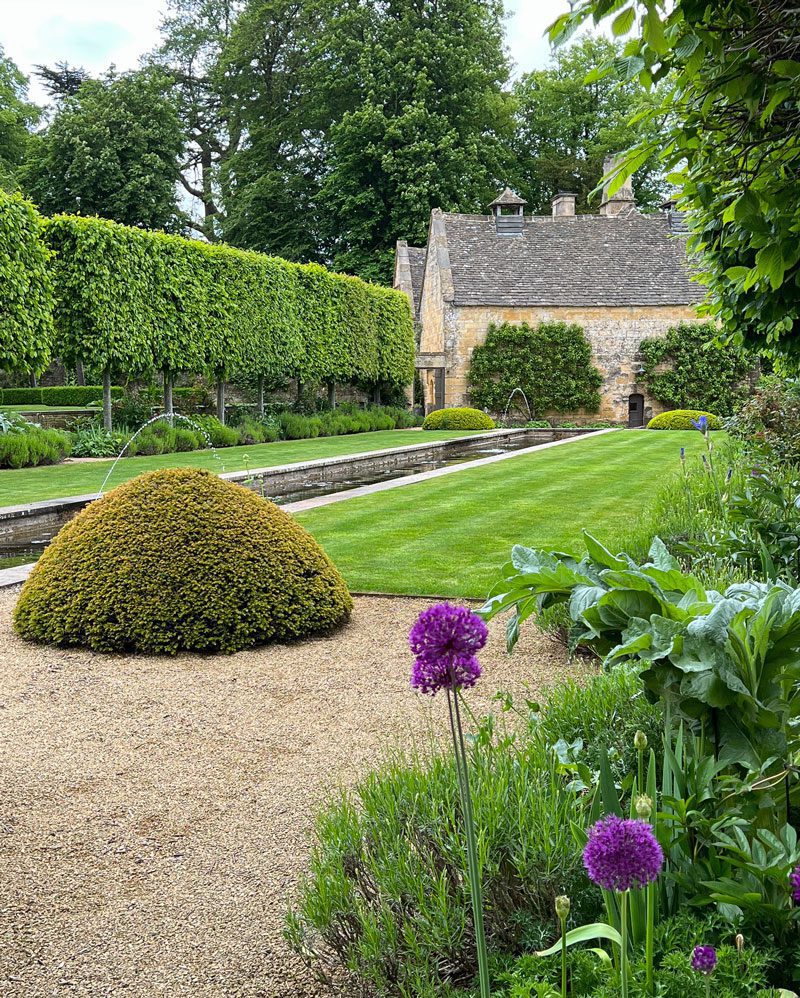
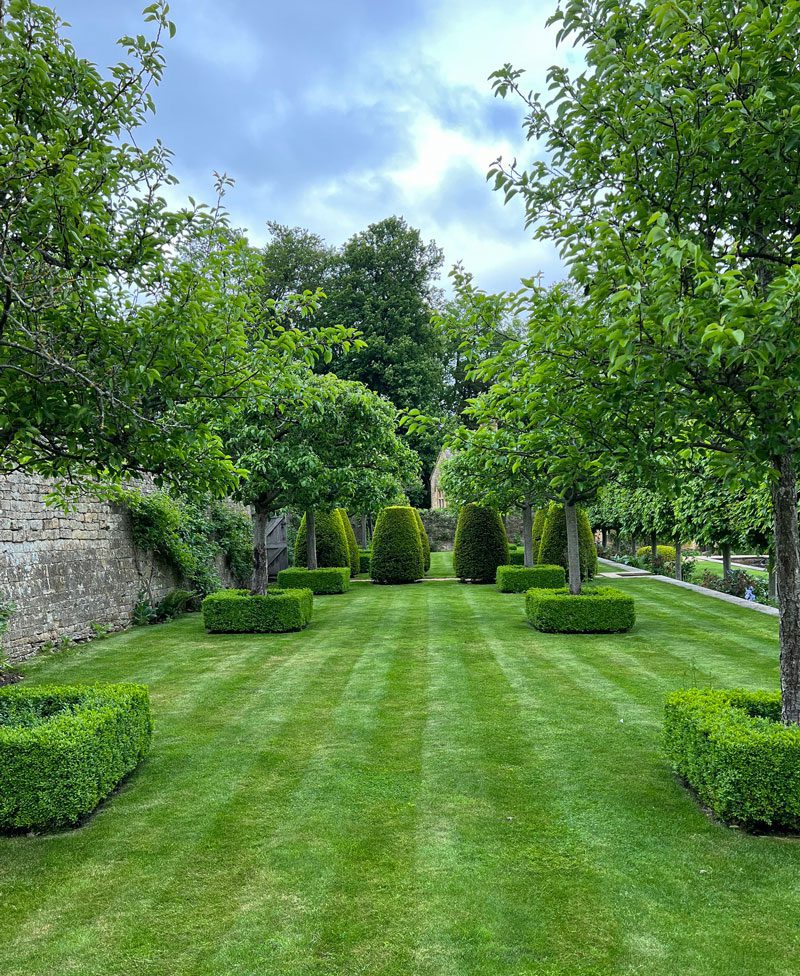

Bourton House provides a smaller scale use of hedges, the interest here coming from their juxtaposition with the wonky topiaries bordering the lawn in the foreground. Also, at this grand Georgian home, a simple but effective sweeping, sloped hedge intersects a bountifully planted herbaceous border.

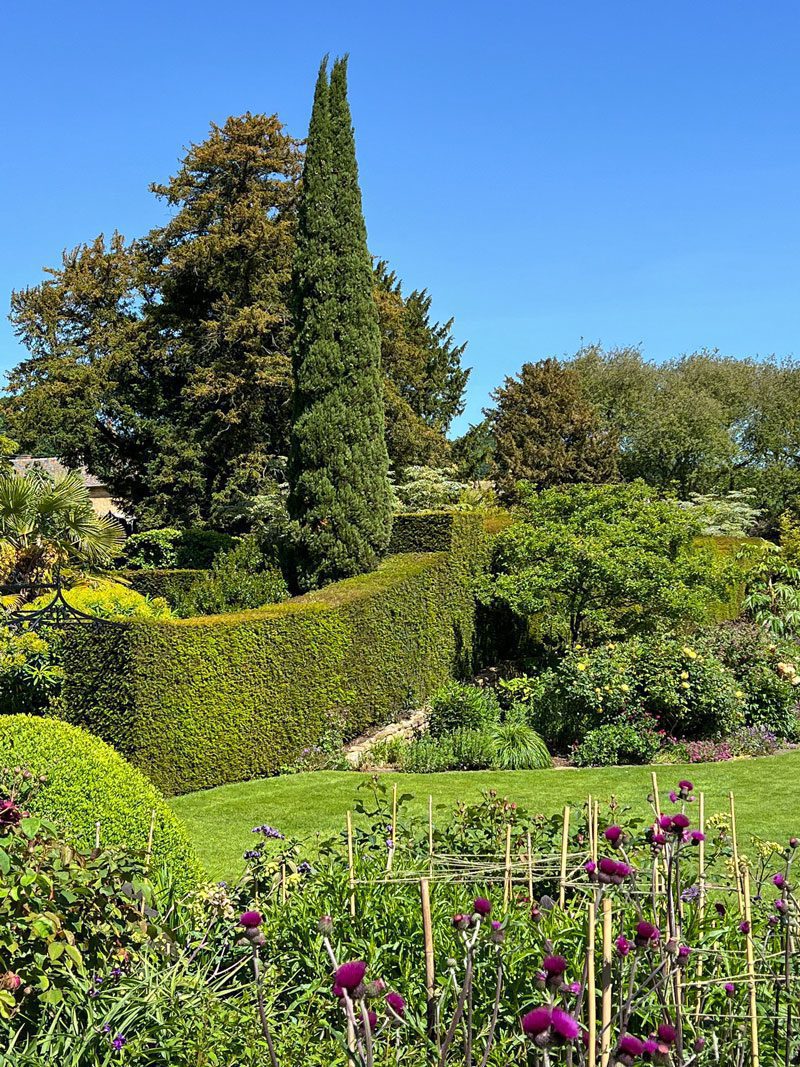
At Admington Hall, the hedge references are more to human scale. I single out this image for while its first use is to enclose a planted bed, this layered yew wall is accented with shaped half circles that provide an interest point as you walk along the path. It is these kind of gestures that make visiting English gardens such a treat.

The same materials (yew, box, hornbeam) used for hedging also serve a garden well when pruned into shapes…from the craziest to the most traditional topiaries. Used as accents or punctuation points, they add structure to a planting scheme as well as interest in winter months.
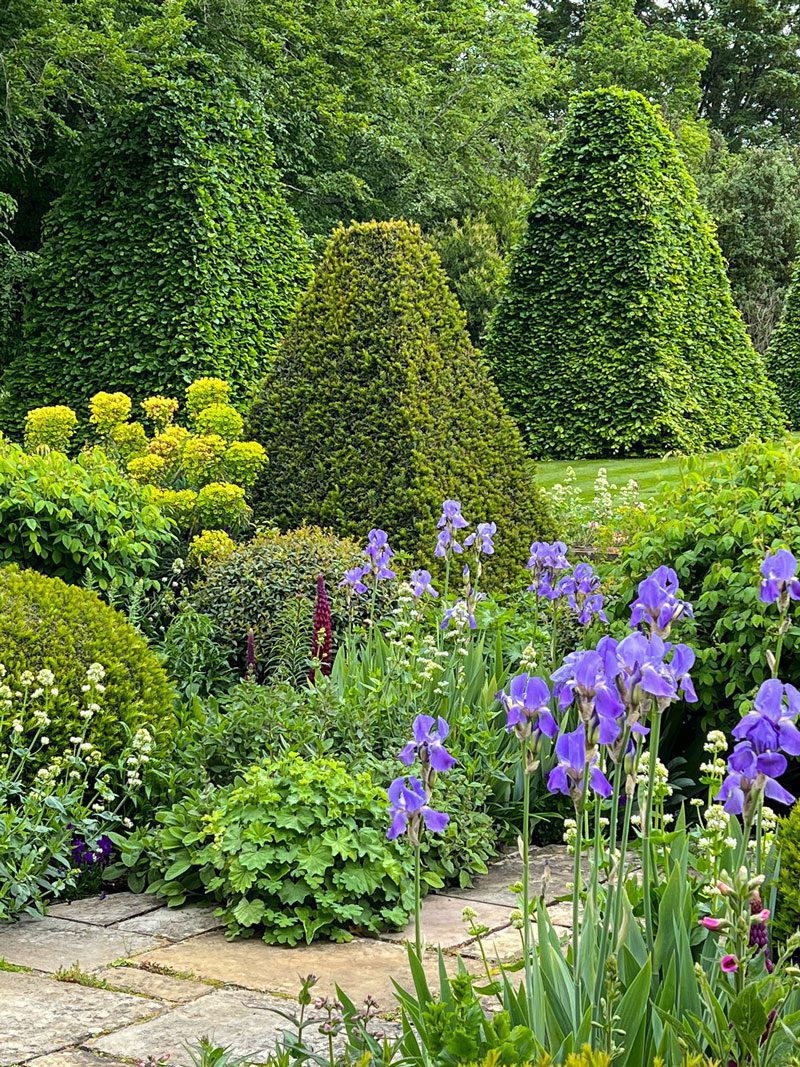

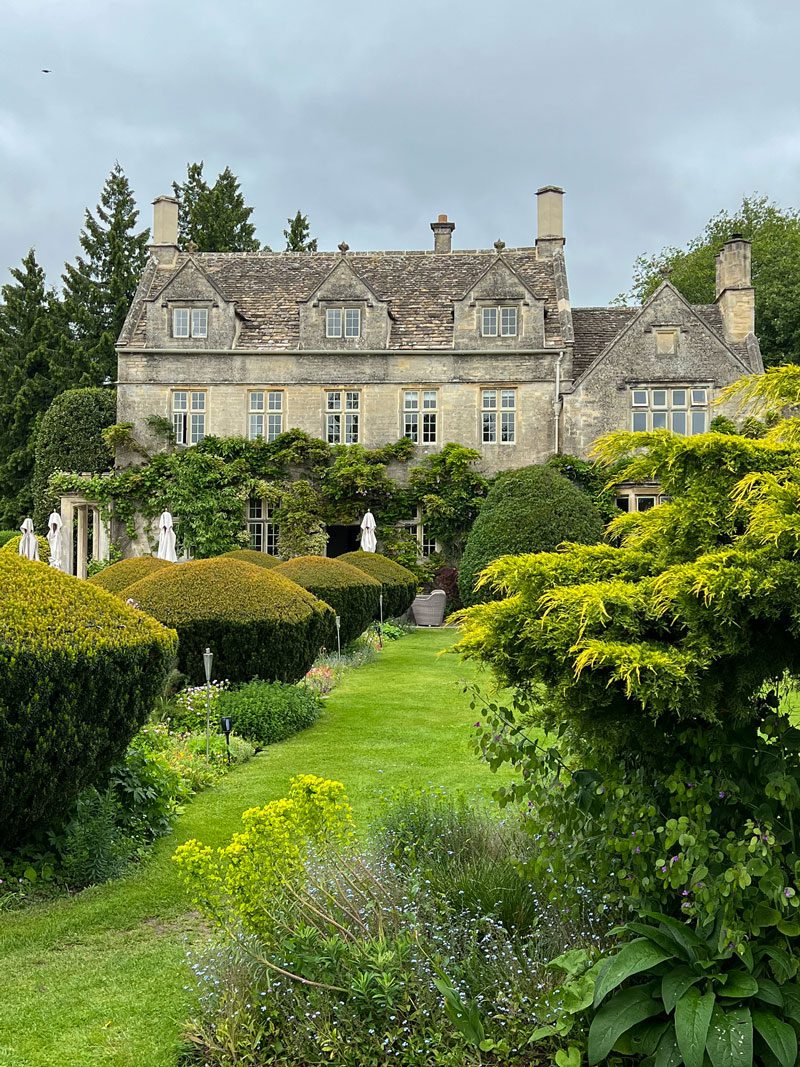
And if you’re wondering what to do with a too large, too boring lawn, choose your favorite shape and create a pattern in an open green area. At Rockcliffe, the owner’s choice was a chess pawn (at Parterre, I’ve chosen obelisks) which mark the crossing points of paths
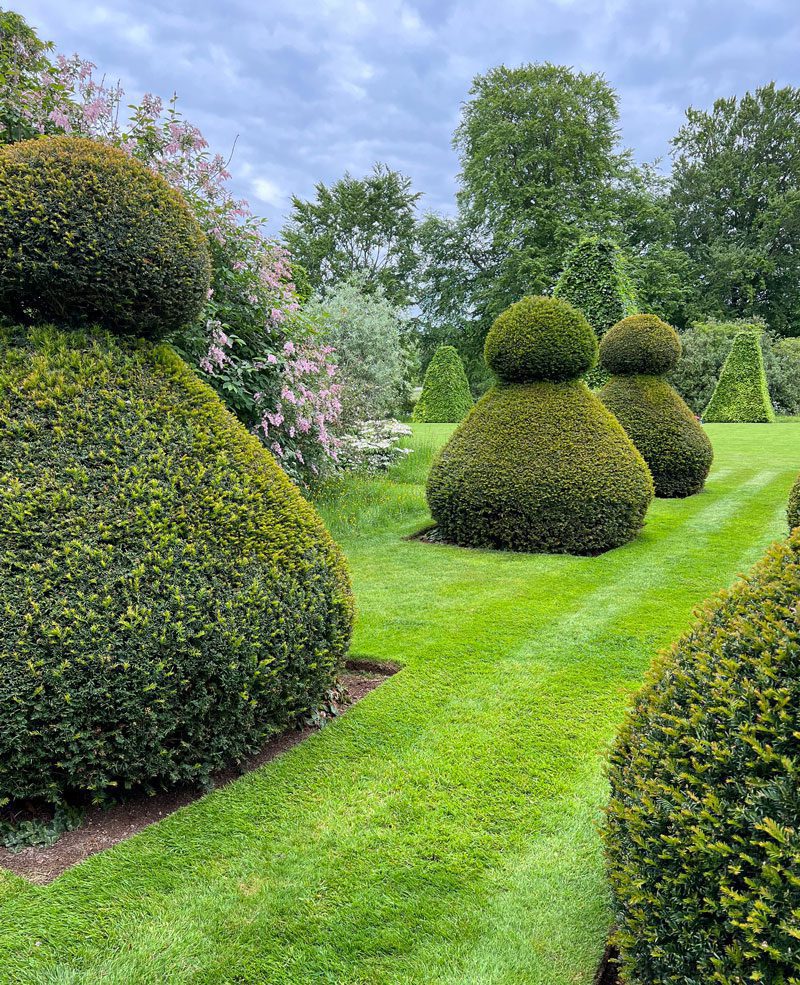
While I adore these creative uses for hedges and their offspring, if truth be told I’m taken with simplicity…as in this still life at elegant Bourton House with a mere ball-shaped standard, positioned just right, completing the scene.

I’ll close with an achievement that deserves big kudos–Antonia Davies’ immaculate beech tunnel which she created at Admington Hall, concise, tight, watched over like a hawk, I’m sure. Not a small undertaking, requiring skill, patience, and time. Congrats, Antonia, and many mercis again for our visit to Admington. Hoping to see you in Newport.

Happy Summer Solstice…









I used to receive “Private Newport” and would love to receive it again. Thank you.
Anne C. Wray
Atlanta, GA
Oh, my…the “masters” @ work…I still have a “love/hate” relationship going on w/my garden. It truly has a “mind of its own”…*sigh* franki
MAGNIFICENT! I was as fascinated by text as I was with those photos.
Good garden bones are indeed crucial.
Something my back yard does not have:(
I wish I had had this knowledge and a superb landscape architect when I started…
oh well – next time!
There is no place in the world like the Cotswolds in spring! Thank you for taking me back. ❤️❤️